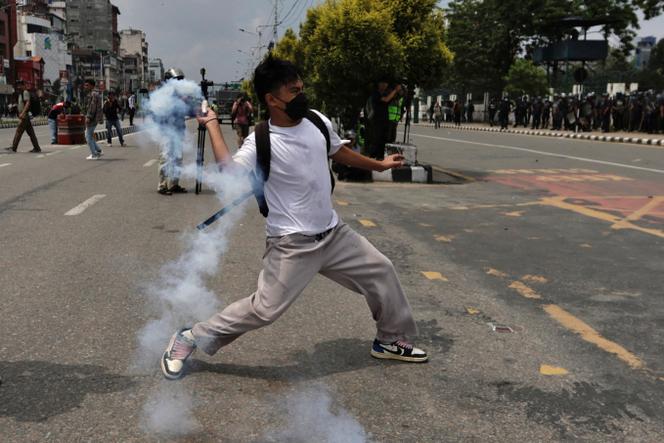


Nepal police opened fire on Monday, September 8, killing at least 17 people as thousands of young protesters took to the streets of Kathmandu demanding the government lift a social media ban and tackle corruption. Several social media sites – including Facebook, YouTube and X – have been inaccessible in Nepal since Friday after the government blocked 26 unregistered platforms, leaving users angry and confused.
"Seventeen people have died," Shekhar Khanal, spokesman for the Kathmandu valley police, told Agence France-Presse (AFP). Khanal said more than 400 people were injured, including over 100 police. According to the police, they had initially used rubber bullets, tear gas, water cannon and batons when the demonstrators pushed through barbed wire and tried to storm into a restricted area near parliament. According to anonymous accounts published by local media outlets, which could not be verified at this time, the police fired live ammunition at the crowd to contain it.
The district administration imposed a curfew in several key areas of the city, including the parliament, the president's residence and Singha Durbar, which houses the prime minister's office. Some of the demonstrators had climbed over the wall into the parliament premises and its gate was vandalised.
The United Nations demanded a swift and transparent investigation after the Nepalese police were accused of opening fire on the protesters. "We are shocked by the killings and injury of protesters in Nepal today and urge a prompt and transparent investigation," UN rights office spokeswoman Ravina Shamdasani said in a statement.
Amnesty International called for a "thorough, independent and impartial investigation" into the deaths and said live ammunition had been used against protesters.
Anger poured over social media over the excessive use of force and death of young demonstrators. Popular platforms such as Instagram have millions of users in Nepal who rely on them for entertainment, news and business.
Demonstrators had started their protest in Kathmandu with the national anthem and waving the country's flag, before chanting against the social media stoppage and corruption. There have been several corruption cases reported in the last few years involving ministers, former ministers and high-profile officials.
Since the ban, videos contrasting the struggles of ordinary Nepalis with the children of politicians flaunting luxury goods and expensive vacations have gone viral on TikTok, which is still operating.
The cabinet decided last month to give the affected social media firms seven days to register in Nepal, establish a point of contact and designate a resident grievance handling officer and compliance officer. The decision came after a Supreme Court order in September last year.
In a statement on Sunday, the government said it respected freedom of thought and expression and was committed to "creating an environment for their protection and unfettered use."
Nepal has restricted access to popular online platforms in the past. The government blocked access to the Telegram messaging app in July, citing a rise in online fraud and money laundering. It lifted a nine-month ban on TikTok in August last year after the platform agreed to comply with Nepali regulations.
